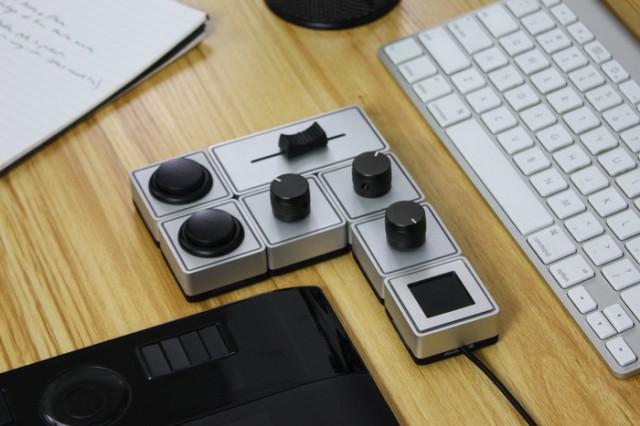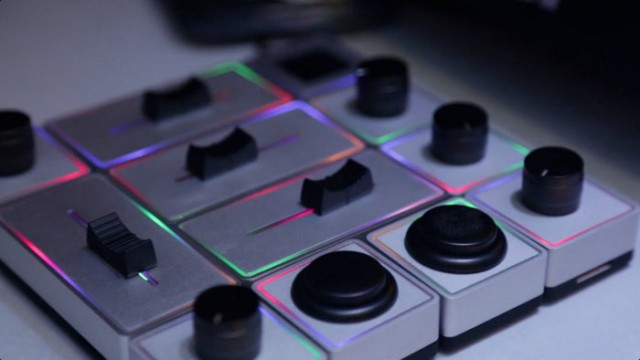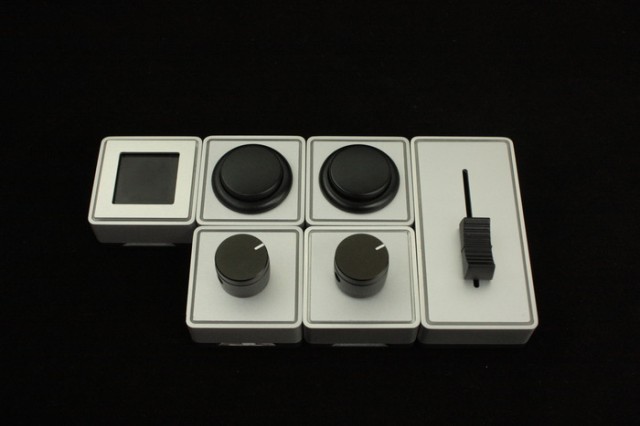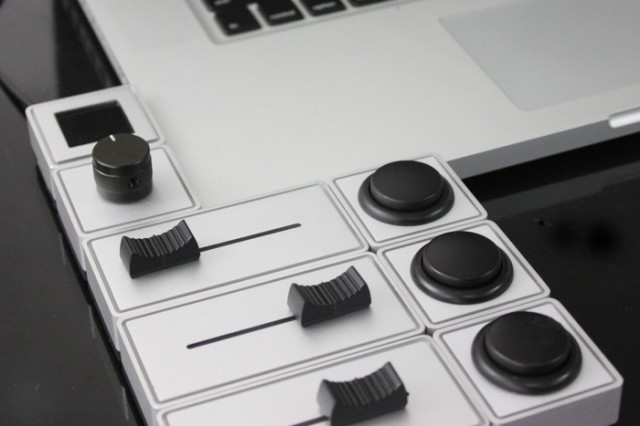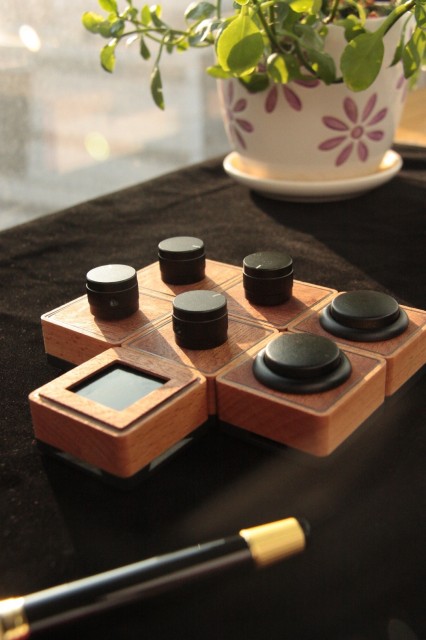It seems everyone is thinking in LEGO these days. There’s littleBits, which snaps together analog components with magnetic connections. There’s Patchblocks, which connects digital modules you can then re-program onscreen.
And now, there’s Palette, a set of controller blocks that snap together and connect via USB. It gives you knobs, sliders, and X/Y controls for manipulating any software – from music to apps.
The crowd-funded project looks smart in both hardware and software design. And software easily extends what it can do – whether you’re playing a DJ set in Traktor or editing graphics in Photoshop. (Smart segues between those roles in the promo videos.)
Oh, and yes – it also does pulsing RGB LED disco effects, for added visual feedback.
It also represents a new approach to the development process itself. Crowd-funding is big, yes. But “incubators” are next – an attempt to not only immerse projects in necessary capital, but in a broad range of experience. (Here in Berlin, a new incubator is showing results tomorrow, in fact.) And for Palette, that meant spending weeks in Shenzhen, China, bringing the product designers closer to the people who design and make the components – those knobs and faders and USB connections on which the product relies. It’s part of the HAXLR8R incubator, which features the likes of Atari’s (and Chuck E. Cheese’s) Nolan Bushnell and our friend Mitch Atlman (Mitch was also one of the inaugural CDM Handmade Music/Musicmakers participants back in New York).
It’s startups with hard, real results, not just apps or websites.
And that’s doubly relevant here, because Ed Sharma of Palette tells us he doesn’t just want your enthusiasm or money – he wants your input and collaboration. “We are just engineers,” Ed tells CDM, “and the input of you and your readers readers can help shape this technology.”
So, what do you get?
Snap-together modules. A button, a knob, a slider, a joystick, and a jog wheel are all early possibilities. Interestingly, each module is just one input each – so one module gives you one slider; there’s not a four-slider set.
Premade software functions: “no coding or tinkering required.”
How it works: The creators describe it thusly:
Palette is designed with easy of use in mind. Each kit comes with it’s own Power Module. You can create your own Palette, just:
Connect the Power Module to a USB port
The Power Module is detected by our Palette Desktop App
Connect as many modules as you’d like to create your own unique interface
The desktop app detects these modules on the fly, as you add and rearrange them.
Use the app to individually map modules to software functions, or use presets to map them all at once
That’s it! Now you have a professional tool that you designed, that looks good enough to sit on your desk.The Palette Desktop App does all the hard work. A photographer can create a personalized controller for Adobe Lightroom where a button can control brush tool, a dial can control brightness, and a slider can control zoom. The physical interface provides tactility, which allows for comfort and precision for long work sessions without the need to take your eyes off your work.
And it’s worth saying, while the paradigm connects closely with music, that same tactile control could be relevant to other users. They show off gaming and other apps, too. (I like the grandmother-friendly Skype controller!)
This is “controllerism” as championed by musicians, now being made available to everyone else, too.
Proposed ship date: June 2014.
The Kickstarter project, based in San Francisco and Waterloo, Canada, launches today. From $89 Canadian, you can get a starter kit with four modules; fancier versions scale up from there.
Kickstarter: Introducing Palette: The First Freeform Controller
They’re asking for feedback, so – while I always hesitate to say this – don’t be shy.
Official site:
Addendum: Mawzer is dead; long live Mawzer. Also, since 2007, I’ve learned to be careful about ending headlines with question marks. Yes, this idea has happened before.
Bonus videos!
